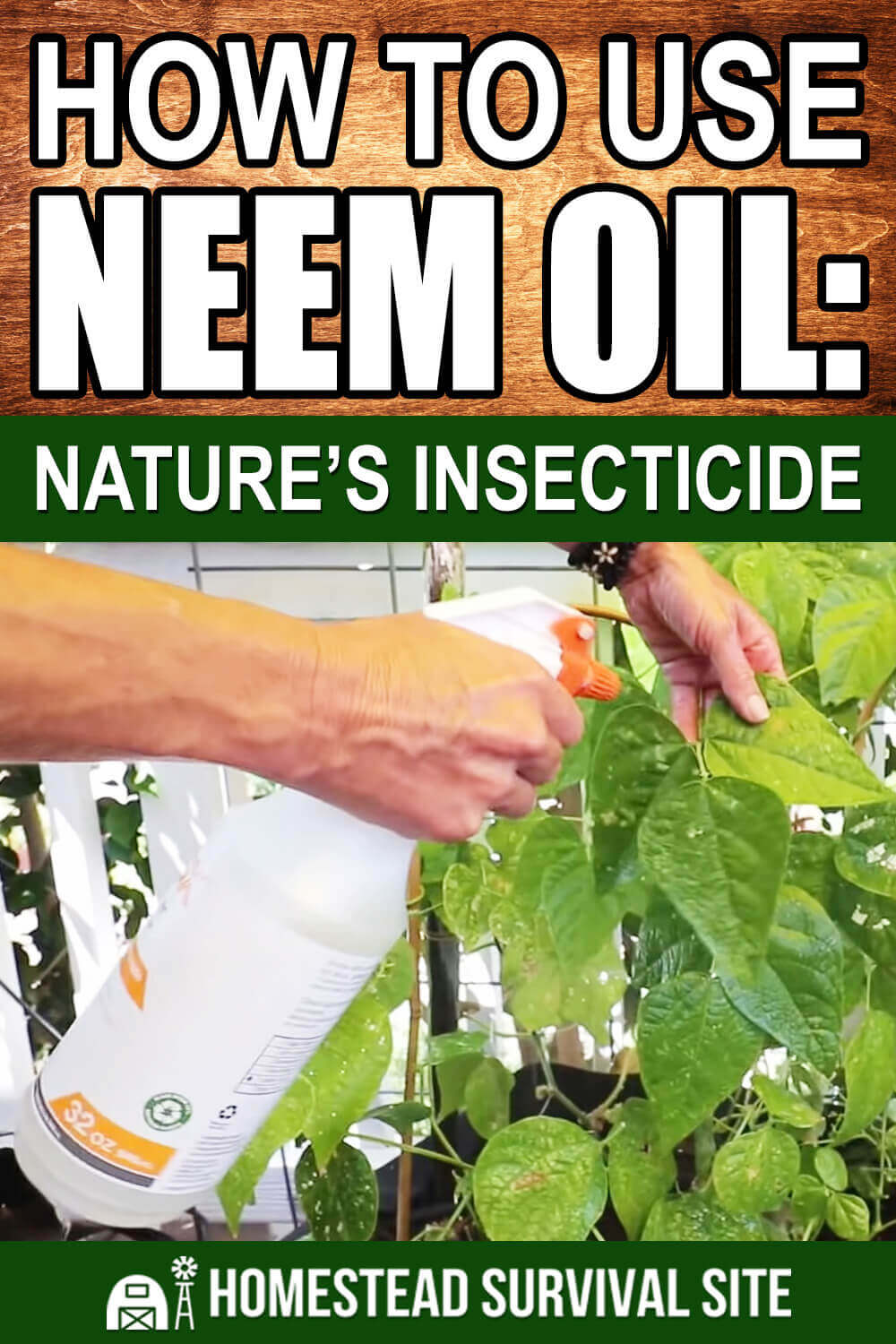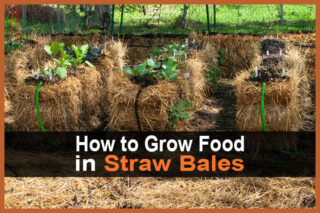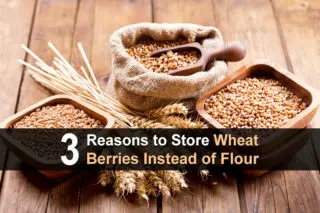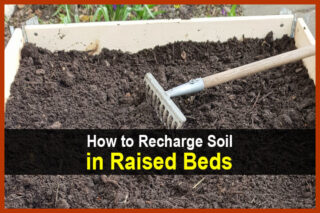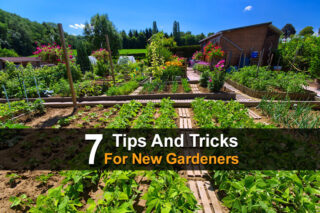Estimated reading time: 6 minutes
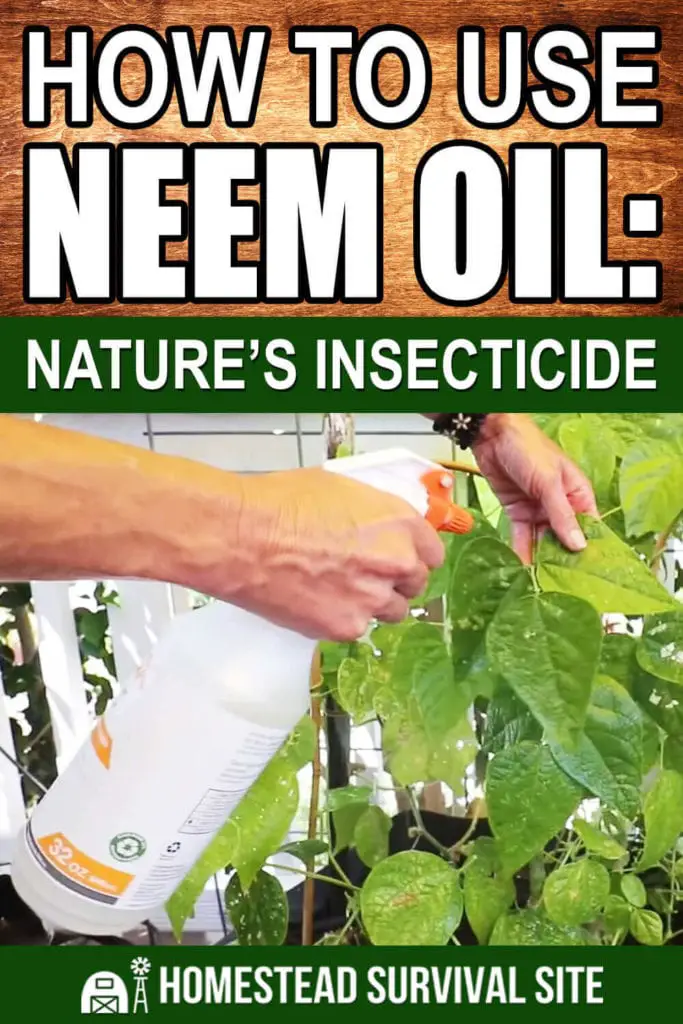
Many gardeners dismiss neem oil due to its labels of “all-natural,” “non-toxic,” or “organic.” They mistakenly believe it lacks the effectiveness of chemicals with unpronounceable ingredient lists.
This lures them into using products harmful to the environment and the gardeners themselves. Plant-based neem oil doesn’t work like that.
Want to save this post for later? Click Here to Pin It On Pinterest!
What is Neem Oil?
The neem tree’s botanical name is Azadirachta indica. It belongs to the plant family Meliaceae which also includes mahogany trees. Gardeners have cultivated neem since ancient times for its beneficial uses in the garden and the home. Various parts of the tree are used in traditional Ayurvedic medicine in its native India.
Neem oil is most often obtained by cold-pressing the seeds and fruits. It is the same process used to extract other nut or plant-based oils. This process creates a highly concentrated, potent oil that has to be diluted before use.
Neem Oil in the Garden
Neem oil is effective in battling a wide range of garden problems. It is a truly versatile oil that is safe when used properly. Neem oil is inexpensive and easy to find, which makes it even more desirable.
Neem Oil as an Insecticide
The insecticidal power of neem oil comes from an ingredient called azadirachtin. Azadirachtin is lethal to many types of insects and works in several ways:
- Kills directly.
- Repels with a nasty taste.
- Attacks the larvae of some insects.
- Interferes with the ability to feed or move in others.
- Affects an insect’s hormone system and renders them sterile.
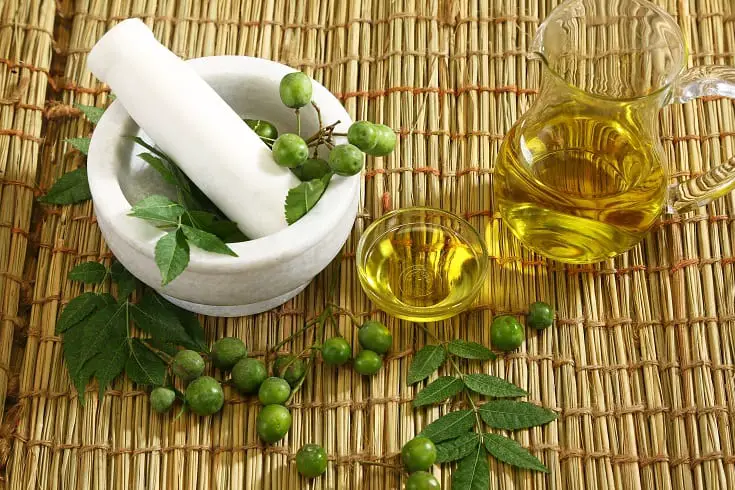
Neem oil is a well-rounded weapon as it attacks the pests at all three stages: adult, egg, and larval. Some of the harmful insects that it is especially effective against include:
- Aphids
- Cabbage worms
- Cockroaches
- Flea beetles
- Flies (including whiteflies)
- Gnats
- Grasshoppers
- Japanese beetles
- Mealybugs
- Mosquitos
- Moths
- Nematodes
- Scale
- Slugs
- Snails
- Tent caterpillars
- Termites
- Thrips
Neem Oil as a Pest Preventative
Use neem oil to prevent pest infestations or at least deter them. Generally, applying it approximately every ten days or so will be effective.
You may decide to be proactive and use it during the winter when certain garden pests go dormant. This preventative measure will keep them from hatching or coming out of hibernation to wreak havoc on your spring garden.
Neem Oil to Control a Pest Infestation
Test your plant by spraying a small section first, covering both tops and undersides of the leaves. The test will determine if the neem oil is working and if your plant is handling the treatment well.
If all is well, treat the entire plant. Spray plants once a week until the pests are gone. With heavy infestations, you can safely spray the plants 2-3 times a week.
When To Use Neem Oil
Knowing when to use neem oil in the garden is just as important as learning how. A good plant is to apply it as early or as late in the day as possible. If possible, pick a cloudy day, but avoid spraying on windy days.
Consider how much neem oil solution you will need before you mix it. It is better to make small batches and use it all in one session. The active compounds in the oil begin breaking down and lose their strength after about 24 hours.
Frequency Of Use
A great thing about neem oil is that it doesn’t build up or leave a residue. It is biodegradable and won’t harm plants with continual use.
Apply it as often as you choose, but a biweekly treatment is usually sufficient. Heavy infestations may require weekly applications until the problem is eradicated.
Neem Oil Safety
Neem oil is generally safe for most applications. Even with it being non-toxic, it is pretty powerful and should be used carefully. The oil can cause skin irritations or eye sensitivity, especially in high concentrations.
Some people are sensitive to the spray or scent. Use protective equipment such as gloves, masks, and safety eyewear.
Keep neem oil and other gardening supplies away from children and pets. It is inadvisable to ingest neem oil as it will cause stomach distress. Try not to spray plants you will harvest within three weeks.
The oil leaves an unpleasant yet harmless taste comparable to a garlicky peanut. Before eating, it helps to wash any fruits or vegetables that may have been recently sprayed.
Neem Oil and the Beneficial Bugs
Neem oil is believed to be safe for beneficial garden insects, but it is wise to be cautious. Any substance can be harmful if used in large amounts. Bees, butterflies, ladybugs, and other beneficial bugs will be fine if you are careful in your neem oil use.
Apply the oil early in the day before these garden helpers are active to help keep them safe. Or you can spray after the sun has gone down when the good bugs have gone to bed. Avoid spraying host plants such as milkweed where butterfly larvae and caterpillars feed.
How To Prepare a Neem Oil Mixture
Neem oil doesn’t mix well with water and needs some type of surfactant to be effective as a spray. Many gardeners use environmentally safe dish soap or natural insecticidal soap. The soap makes it possible for the neem oil mixture to cling to a plant’s leaves and stems.
Neem oil is found in many concentrations, formulas, and forms. The highest concentrations of azadirachtin are usually found in the liquid form. It can also be obtained as granules, powder, or dust. You can buy premixed sprays or make your own mixture from concentrate. Making a solution stronger than recommended will not make it any more effective.
A typical recipe for mixing your own neem spray is:
- 1 tsp neem oil
- ½ tsp soap (either dish or insecticidal soap)
- 1-quart warm water (warm water helps the oil mix with the water and soap)
Combine all three ingredients in a spray bottle and shake vigorously. Shake often while applying to keep the oil and water from separating.
Neem Oil as a Fungicide
Another significant benefit of using neem oil in the garden is its fungicidal properties. Neem oil prevents and treats common fungal diseases such as anthracnose, black spot, mildew, rust, and scab. Many natural gardeners mix neem with other essential oils such as clove, tea tree, and thyme.
You can purchase neem oil in any gardening store or department, or online.
Like this post? Don't Forget to Pin It On Pinterest!

